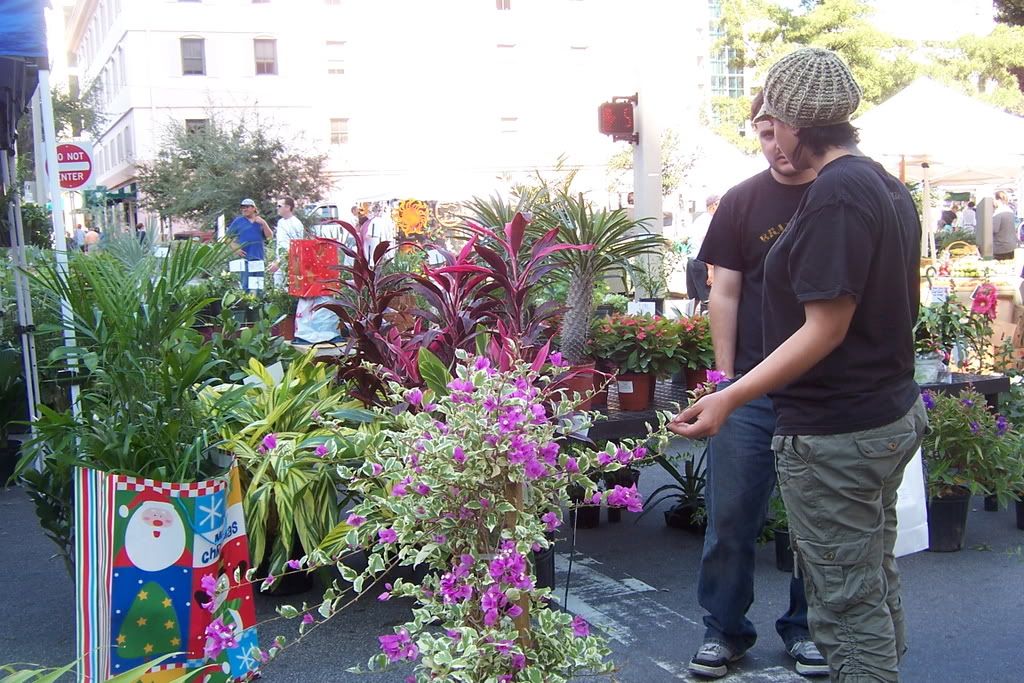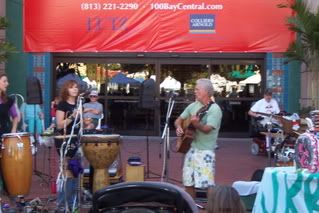In January 2008 I had a chance to sit down with Charlie Fiore, Denise his manager and Helen to talk to them about their new enterprise: vegan baking. They were so much fun and so much apart of the community, that I could see why folks like working for them.

CV: In December 2007, I visited your store to attend a Boston Vegetarian Society www.bvs.org holiday gathering and I was very surprised to find a marvelous array of vegan baked goods along with the regular baked goods one expects to see in an Italian bakery. I was also surprised that I loved your one-bite brownies; they were the best I’ve ever had. So I wondered how vegan part of the bakery came about.
CF: Since the 1990s I was interested in opening a coffee shop cum bakery although I have no background in this area. Than in early 2000 I looked around and saw that there was no place in JP where folks could hang out, so we decided to open up a North End style bakery. We opened in December 2004 and just about around the same time three other bakeries opened which was a bit of a shock. So it required us to pretty quickly diversify and make ourselves different. We did this by deciding to be ‘old fashioned” and create a place where everyone would feel comfortable, from the seniors across the road in senior housing, to young folks, to young families with children. For this reason we (my partner and I) decided to keep prices affordable and not to have WiFi.
We were doing quite well for ourselves and than just over three months ago, Matt one of our employees suggested that we talk to a vegan baker that he knew. So we were introduced to Helen and liked what she did and thought it was something different. We invited her to work in the store for 12 hours a week. We had absolutely no idea that the enterprise would take off the way it has; the community has really embraced the idea and today our vegan products, which includes pizza as well as baked goods, accounts for 25% of our total sales. In the summer we will be adding vegan ice cream to the list of products.
We find that folks are coming quite a distance to buy our goods. Parents have started to call with special requests for their kids who suffer from particular allergies. Helen will produce a cake and/or cupcakes that might be gluten free, soy free, or whatever is needed based on some specific questions that she asks the parent. So because of demand, we now have two bakers working 30 hours a week and we have just added an assistant to do the shopping for them. So I am thankful to Matt that he recognized the demand way before I did.
CV: Do you buy your produce locally. For example do you get your apples and blueberries from local farmers?
CF: We use Taza Chocolate for our baked goods and our hot chocolate. We serve Irie Tea out of Somerville and Jim’s organic coffee out of West Wareham. In the summer we buy our fruit, vegetables and brown eggs from the farmers’ market in JP, a small amount of produce from Allendale Farms, and we use our own tomatoes and herbs from our back garden. In the winter we buy our produce from retails stores. For our vegan goods we buy soy butter spread, tofu, soy milk, unrefined sugars, gluten free flour and brown eggs from Harvest Coop. which is next door. The end product is more expensive because of the higher cost of ingredients but we keep the retail price the same as for our regular baked goods.
CV: There are many coffee and tea companies around why did you select Jim’s Organics and Irie Teas?
CF: As we were getting ready to open, Chris Hill stopped by and spent two days with us lettings us sample all of their products. He was very knowledgeable and likeable and sells a socially responsible product. The company works directly with farms from where they buy the coffee and they also support their communities. All their coffee is fair-traded even though it does not have the logo and it is ethically sourced. They give 10% of the profits from the Christmas Blend directly back to the farms where the coffee originated. We picked Irie Teas because they too were local the teas are organic and fair trade. They support organic farming and that is important to us.
CV: When I was here in December, one of your employees Matt actually, was raving about the bakery and how nice it was to work for you because of all the organizations you support. I wondered if you might speak to this.

CF: We donate money to Spontaneous Celebrations http://www.spontaneouscelebrations.org/ who help create and sustain a community cultural life in JP and Roxbury. They run the Wake up the Earth festival on the first Saturday in May as well as the annual Lantern Parade on the last Sunday of October which brings thousands of folks into JP. The organization also serves Boston youth and they are very successful in what they do. We also support Search for a Cure which is an AIDS research group, we support some very small organizations that many people have probably never heard of, the local schools, and KidsArts www.jpkidsarts.org which is a group that provides affordable arts programs for children in art, puppet making, creative writing, dance as well as cultural field trips. They actually did the display in our window.

CV: One thing that particular stood out when I visited in December was how happy and enthusiastic your employees were. What’s the secret?
CF: We are a laid back and casual organization while still being professional. We listen to our employees and are very flexible so that we can support our employees who go to school, play in a band, or volunteer with the many organizations that we support. Helen, our vegan baker teaches a course at KidsArts and the Boston Adult Education Center. In February she will be holding classes for members of the Boston Vegetarian Society. We allow and encourage our employees to explore their interests and ideas and let them run with them.
This article is pending publciation in EdibleBoston






































